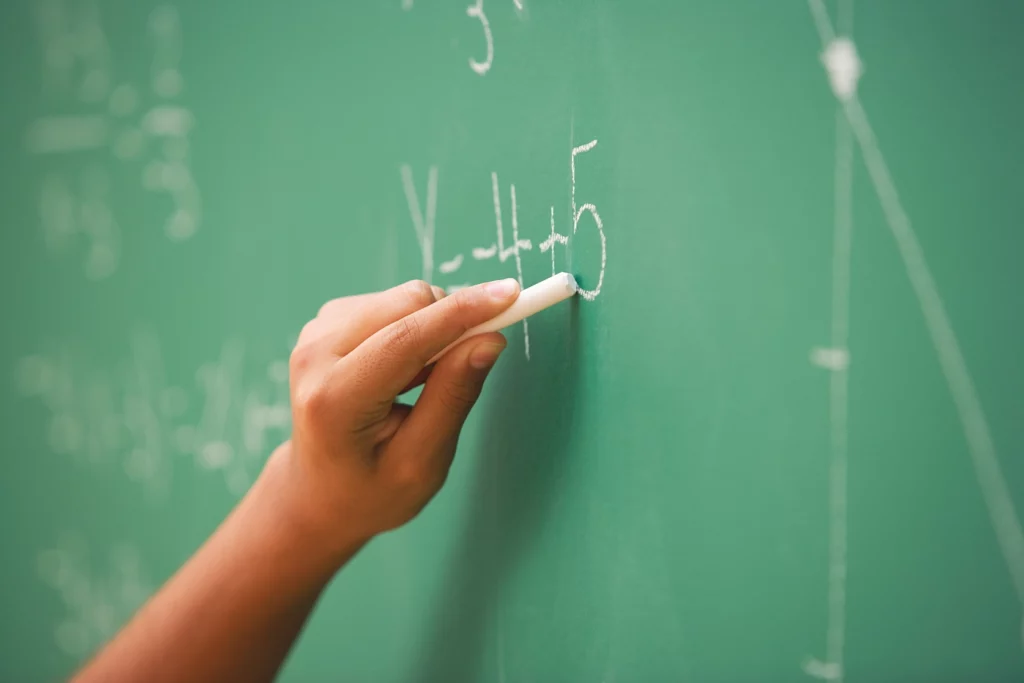Article:
THE MATH-MUSIC CONNECTION
BY MANDY HOWARD
While there has been debate around it, the answer seems to be undoubtedly and consistently, yes.
For decades, scientific studies and anecdotal evidence has shown a strong positive correlation between musical training and increased success in STEM subjects and standardized test scores. The connection is universally accepted, but because students do not exist in a vacuum, the debate becomes whether this relationship is correlation or causation.
Correlation or Causation?
A correlation would mean the connection, while present, is not cause-and-effect.
For example, a student who plays a musical instrument may be more likely to have financial means, engaged parents, or a more robust school curriculum and, therefore, would also have more support academically. It’s not the music that causes success, it’s the presence of the other factors.
On the other hand, a causation argument insists studying music, in and of itself, causes students to simply become “smarter.”
Martin J. Bergee, a professor emeritus of music education and music therapy at the University of Kansas School of Music, originally stood firmly on the correlation side. In his “Multilevel Models of the Relationship Between Music Achievement and Reading and Math Achievement” study, Bergee eliminated factors like demographics, income and setting, which, he believed, were likely reasons for the positive correlation. The 2020 study, published in the Journal of Research in Music Education, examined over 1,000 students and sought to negate causation.
The results were not what he expected. “My intention was to show that the relationships are probably spurious, meaning the background influences are the main drivers of the relationships, and once those outside influences like demographics, etc., are controlled for, the relationship essentially disappears,” he wrote for a University of Kansas news release. However, much to his surprise, he wrote, “not only did they not disappear, but the relationships are really strong.”
After his findings, Bergee looked at the connection differently. “Music achievement, math achievement, reading achievement—there are probably more generalized processes of the mind that are brought to bear on any of those areas.” In other words, his study led him to believe music may help the brain develop in a holistic way, which improves success in all areas.

Computational Thinking
Scott Laird is the chair of fine arts and the orchestra director at the North Carolina School of Science and Mathematics. Prior to coming to NCSSM in 2001, he served as a music instructor at Eleanor Roosevelt High School near Washington, D.C. For 30-plus years, he has witnessed the strong connection between musical fluency and high achievement in advanced science/technology/engineering/math (STEM) areas.
He knew there was a link, but it took a conversation with NCSSM chemistry instructor Robert Gotwals to give structure to the anecdotal evidence. Gotwals, who has developed the largest high school computational sciences program in the country, introduced Laird to the idea of computational thinking: the mental ability to apply problem-solving techniques and logical reasoning skills.
It is based upon four pillars:
Decomposition: Taking something complex and breaking it into simpler parts to understand it better.
Pattern recognition: Recognizing patterns—whether musical, linguistic or mathematical—then mastering them and being able to build upon them.
Abstraction: Taking a specific element of a problem and being able to zoom out or zoom in to see it in another light.
Algorithmic thinking: Creating logical steps or processes to complete a task or solve a problem.
Laird instantly saw the connection. “Each of these pillars are what we ask students to do in an orchestra classroom every day,” he says. “The kind of thinking we are doing in an arts classroom is the same kind of thinking we are encouraging students to do in the math classroom, in the computational classroom and in the hard sciences classroom.”
In arts training, the four pillars of computational thinking are inherent. Students are asked to decompose orchestral movements or paintings and consider them part by part. They are taught to build upon patterns like scales and brush strokes. They consistently work in abstraction and algorithmic thinking as they zoom in and out, while creating a process to work toward larger masterpieces and productions. When students train in fine arts, their brain is creating and strengthening patterns of thinking, observation and problem-solving that will be utilized in other areas.
These neural connections have, in fact, been visually observed. In December 2021, researchers from the University of Tokyo used an MRI to observe the brains of students during a music-focused task. As published in ScienceDaily, they witnessed higher brain activity in students who were trained to play music at a young age. They also made a groundbreaking discovery. For the first time, they observed a specific link between musical processing and language processing.
“It’s hard to put your finger on, because the product is different,” Laird says. “But as I’m learning about these pillars of computational thinking, I realize there’s something I can articulate in a very clear way to get us closer to understanding why an arts program is so important to a STEM education.”
Gotwals and Laird shared their findings at the 2023 American String Teachers Association National Conference. While Laird says he hopes this new understanding will increase efforts to keep and increase arts education, he hopes people remember that the benefits go beyond success in STEM. “Music and the arts are so much more,” he says. “In this era, with a more realistic view of what wellness is, and knowing there are some students who, simply from an aesthetic perspective, need music, need art, need theater to feel whole as human beings … that is equally important.”
Check out more stories around Western Wake by visiting 5 West online.



